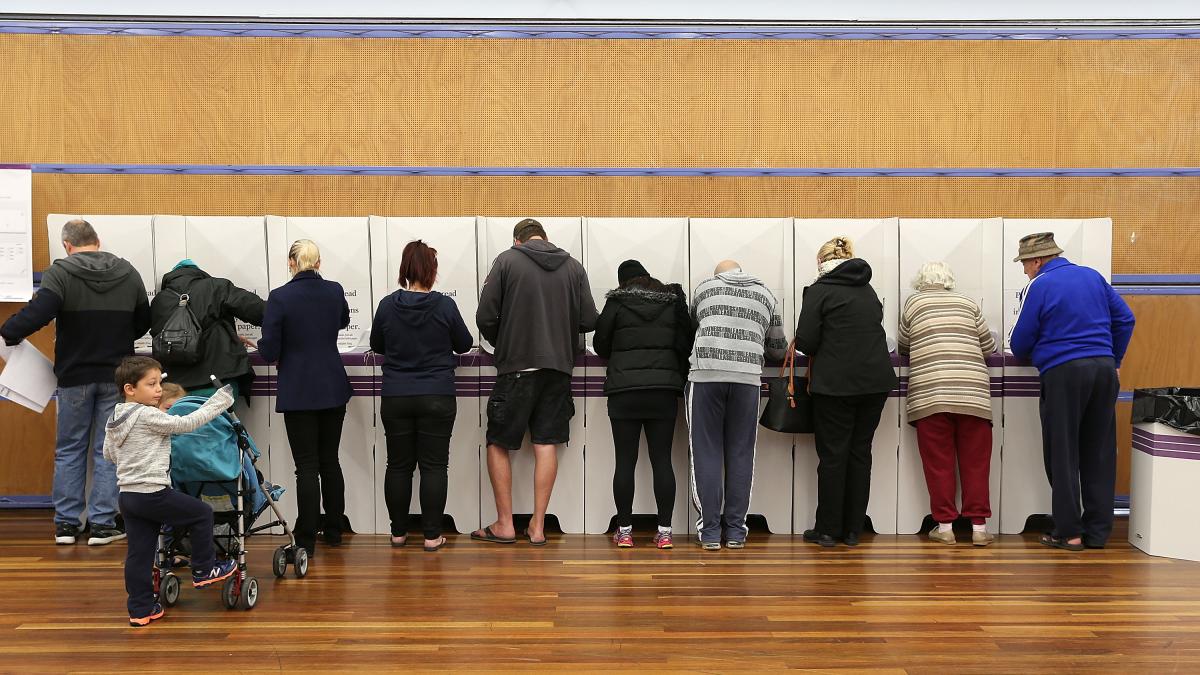
If you’re not one of the shockingly large number of people who have already voted in Saturday’s election, chances are you’re probably going to go to your local public school, wait in line for what feels like a hundred years, be given a massive sheet of paper, vote, then stumble out into the harsh light of day to buy a sausage sandwich and chew on it numbly as you contemplate the inevitable collapse of parliamentary democracy in the face of catastrophic climate change. Cool!
One question that comes up a lot – especially for those of you who are voting for the first time – is whether it is actually worth it to vote below the line on your Senate ballot paper. Well, hopefully we can go some way to explaining how that works and whether or not you should do it – or just get on with your day.
What does voting below the line mean?
When you’re handed your enormous Senate ballot paper, which resembles in many ways a wizard’s scroll, you’re basically presented with two options.
You can either number at least six boxes above the line – which correspond to entire parties or groups – or you can number at least twelve below the line, which features every single candidate running for the Senate in your state.
As long as you number the minimum required (six and twelve boxes respectively) you can continue to number them until you have no boxes left. You can number hundreds of candidates below the line if you have the time and inclination, and then you can brag about that to your disinterested friends who only hang out with you out of a misplaced sense of obligation.
What’s the difference?
When you vote above the line (i.e. for a party or group) you are basically saying that you’re happy for the party to allocate your preferences to their candidates how they see fit. So, if you chuck a big fat ‘1’ to Labor Party, and then a ‘2’ to the Greens, your vote will go to Labor’s candidates in the order they have allocated them, and then to the Greens candidates to the order they have allocated them. And so on, for the six or more you have selected.
If you vote below the line, you are saying that you – a brave individualist who refuses to kowtow to the demands of party apparatchiks – want to vote for individual candidates in your own order. You might throw a 1 to a Greens candidate, then a 2 to a Labor candidate, then a 3 to a One Nation candidate (don’t ever do that, please). You can mark as many as you like as long as you mark at least twelve.
Why am I marking anyone in order anyway?! Doesn’t my vote just go to the person I want to vote for?!
We’ve got preferential voting in Australia, based on the principle that a winning candidate must win a majority of the vote – more than 50%. Putting it as simply as I can: every round of the count – of which there can be quite a few – the person at the bottom gets knocked out, and their votes get allocated to the next preference.
So if your number 1 Labor candidate gets knocked out, your vote goes to your number 2 Greens candidate. If they get knocked out, it goes to your third option, and so on and so forth. It’s worth remembering that if you’re voting below the line purely to put shitheads last, you need to commit and actually number them all.
Isn’t there a whole thing about my vote ending up electing some whacko who only got a tiny number of first preference votes?
That was a thing that happened – until the 2016 election. It used to be the case that parties could submit what was called a group voting ticket (GVT), meaning those who voted above the line in the Senate could have their vote allocated in all sorts of ways according to the party’s preference.
This system made voting below the line particularly useful, as it was the only way you could be absolutely sure your vote was being allocated exactly the way you wanted it to be. It also meant that you had to number every box, which could be a Sisyphean task when there are over a hundred boxes to number.
Minor parties found bizarre ways of allocating their preferences to benefit one another, peaking in the 2013 election when candidates who only got first preference votes in the hundred ended up in the Senate. This was seen as a perversion of the GVT system, so it was reformed.
In short, this can’t happen anymore. Your vote ends where your preference numbers end, and they can’t end up with anyone else.
So give me the verdict! Should I vote below the line?
If you want! There are a few reasons:
- It gives you total control if there are individual candidates and independents you like as opposed to broadly supporting a party.
- You might still want to number every single box so you can put Fraser Anning last.
- You get a sick thrill out of being in the polling booth for a long time.
- You want to drain the provided pens as thoroughly as possible, forcing some poor sap to ask the electoral officers for a new pen.
- You want to tell people you voted below the line, despite the fact this will earn you no clout with any normal-thinking person.
- You are a weirdo.
Basically: there’s no burning reason to do it unless you like to mix and match your candidate preferences. But if you want to, go for it.



